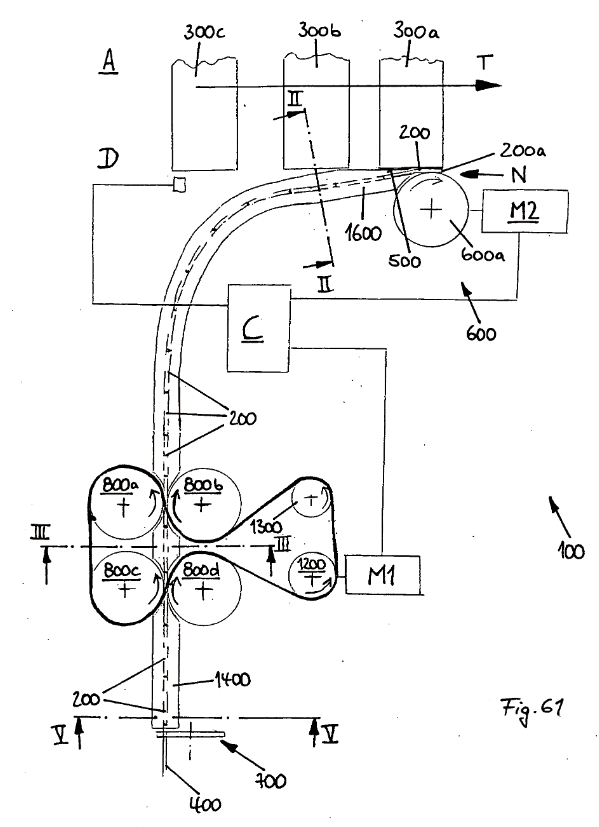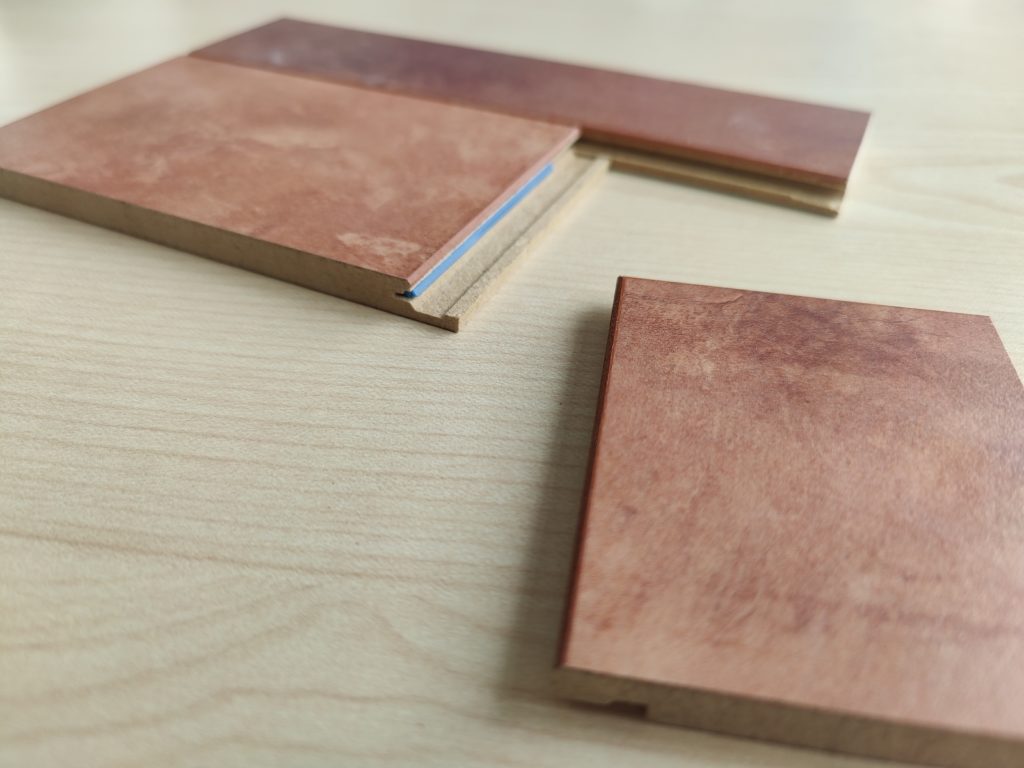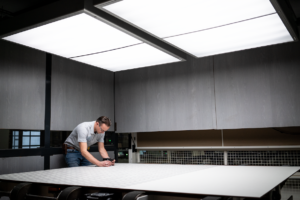At CLASSEN, we had the goal very early on to develop a practical self-locking profile for laminate that anyone could install quickly and easily, glue free and also without hammering, in order to keep the risk of damaging the panel close to zero. Because most of our floors are sold today, as in the past, in hardware stores, and there, those who buy the floor usually want to install it themselves. Back when I started at CLASSEN, laminate planks were still simply made with tongue and groove and glued together. The requirements for laying were high. For example, the first three rows absolutely had to be straight, and not everyone could manage that.
Our company founder, Dr. Hannig, and I were each other's idea man. Whenever we sat together for an hour, we always came up with something sensible. He came up with the idea of the fold-down laying system. He said to me, " I am imagining that the board is laid in from above like a roof tile." After the patent application was filed, I took care of the rest.
We had already made a profile first in 1999 that just snagged on itself. That would have been good if the subfloors in the apartments were as level as possible, but they're just not always, and that's why this solution wasn't stable enough.
You have to think about and calculate everything carefully beforehand. How wide do you make the latch, how much force do you need from the HDF core board, how wide does the carrier have to be. Everything is tried out and checked for tensile strength before it is finally specified. After all, the floor has to withstand forces when sofas and cabinets are standing on it. In addition, wood shrinks and grows depending on the room climate, and the floor and the locking system have to keep up with that.
At some point in late 2004, Dr. Hannig came to me with a special folding angle made of plastic and said, "Can we get it into the board somehow?" Then I milled corresponding grooves into the "roof tile interlock" on the circular saw and glued the plastic profile, which we now call a clip, into it. Then we started to modify it so that we could do without glue, with clamping feet. Then we thought about how the slant had to look so that the individual planks would always remain on contact when clipped in. Then we had to try out the direction of rotation. I'm still an old drawing board junkie and didn't work on the PC. I drew everything like different displacements or rotations on paper to see if it would work.


At the Domotex 2005 trade show, just three months later, we actually already had ten hand samples of our MegaLoc system. Then Dr. Hannig gave me another three months to prepare for production, but it turned out to be half a year. And then we started running MegaLoc in the summer.


Preparing for series production of laminate with a completely new type of installation system is a major task. In the beginning, I always had sample tools made on a table router and tried them out. Only then could I order the right tool for the machines. This is because the milling must be exactly right so that the edges can no longer move.
A lot also depends on the quality of the HDF board. We also tried out how much glue we could save, because the glue is more expensive than all the rest of the board, and that affects how much the product costs in the end.
The idea of cutting the plastic profile from the continuous roll and sliding it into the panel was only possible thanks to good cooperation with the manufacturer of the profile. The final version was thus created together on a napkin during lunch at the pizzeria. Because of its shape with the feet and the trunk, we internally called the profile "elephant". The clip is bent open in the machine at the nose and pressed into the milling with a small wheel. We had templates, and each batch that was delivered I checked. If the template could not be pulled through, the delivery was not usable, then the profile is no longer compatible with other batches. Today CLASSEN even manufactures the clip itself.
Of course, we also tested the load capacity of the new MegaLoc profile. For this purpose, we developed a testing machine with pressure cylinders that practically simulates walking on the floor for three or four years. In an antique store in Kaisersesch, we laid 300 square meters of the first laminate flooring with MegaLoc for testing. I always went there to see what the floor would do over time. For example, furniture was moved over it with a handtruck. And that floor is still there today. So our laminate with MegaLoc is holding up.
There was a lot of brain power behind it in my work. Of course, you take some of the problems you want to solve home with you. Sometimes the ideas came to me when I was mucking out the horse stables. We have always cross referenced bounce ideas off each other in the team, and a lot of things have to be discussed. But at CLASSEN we always had the freedom to think. I really enjoyed that and it's still what makes the company so innovative today.




